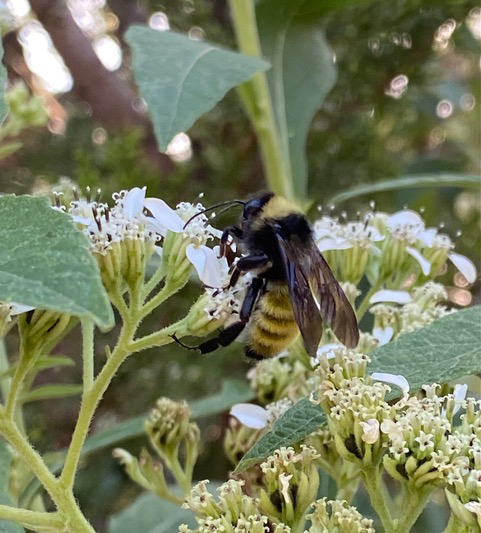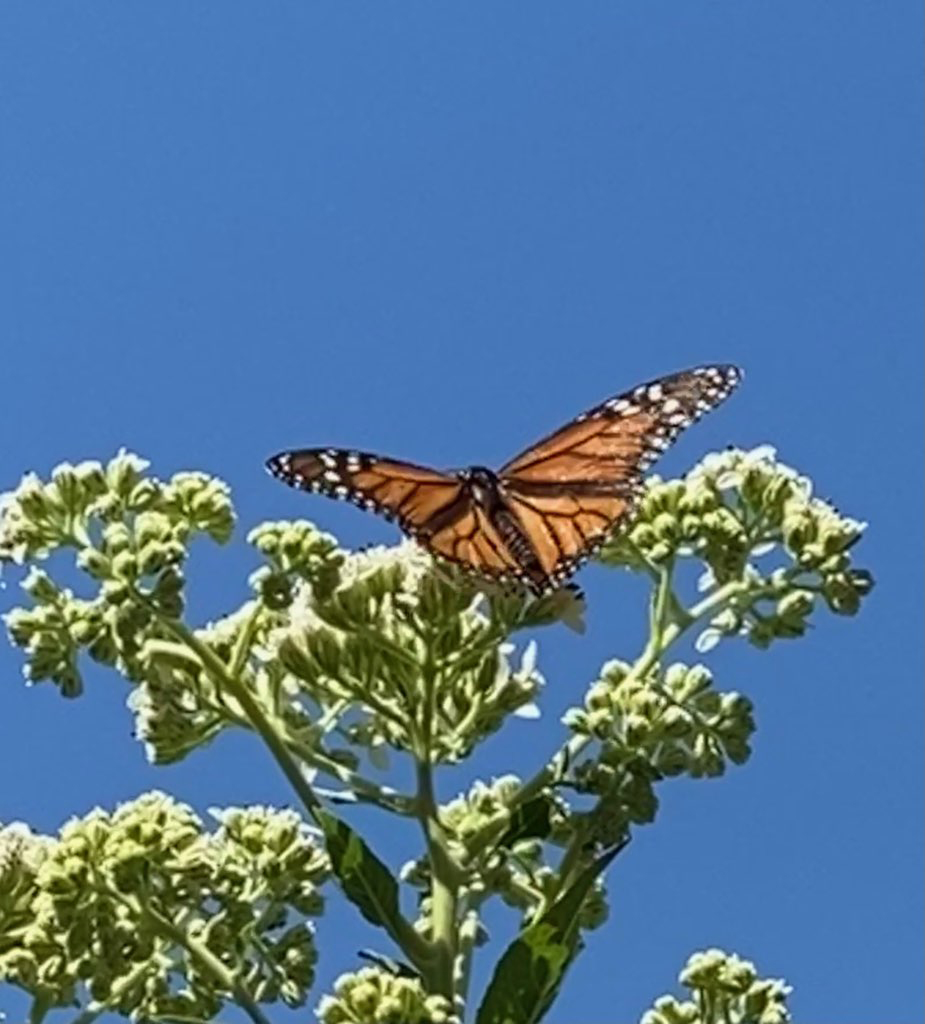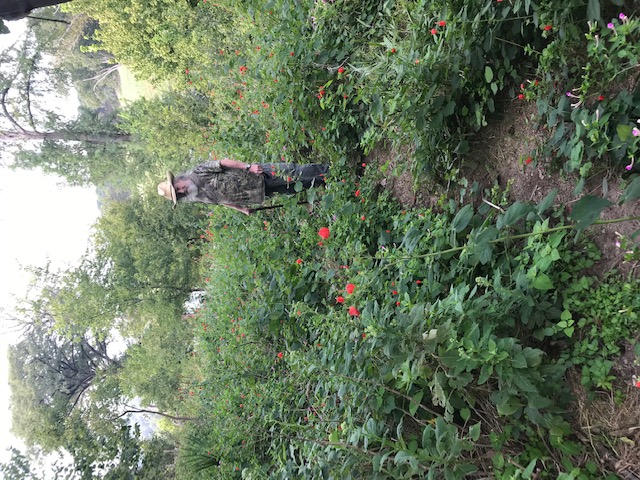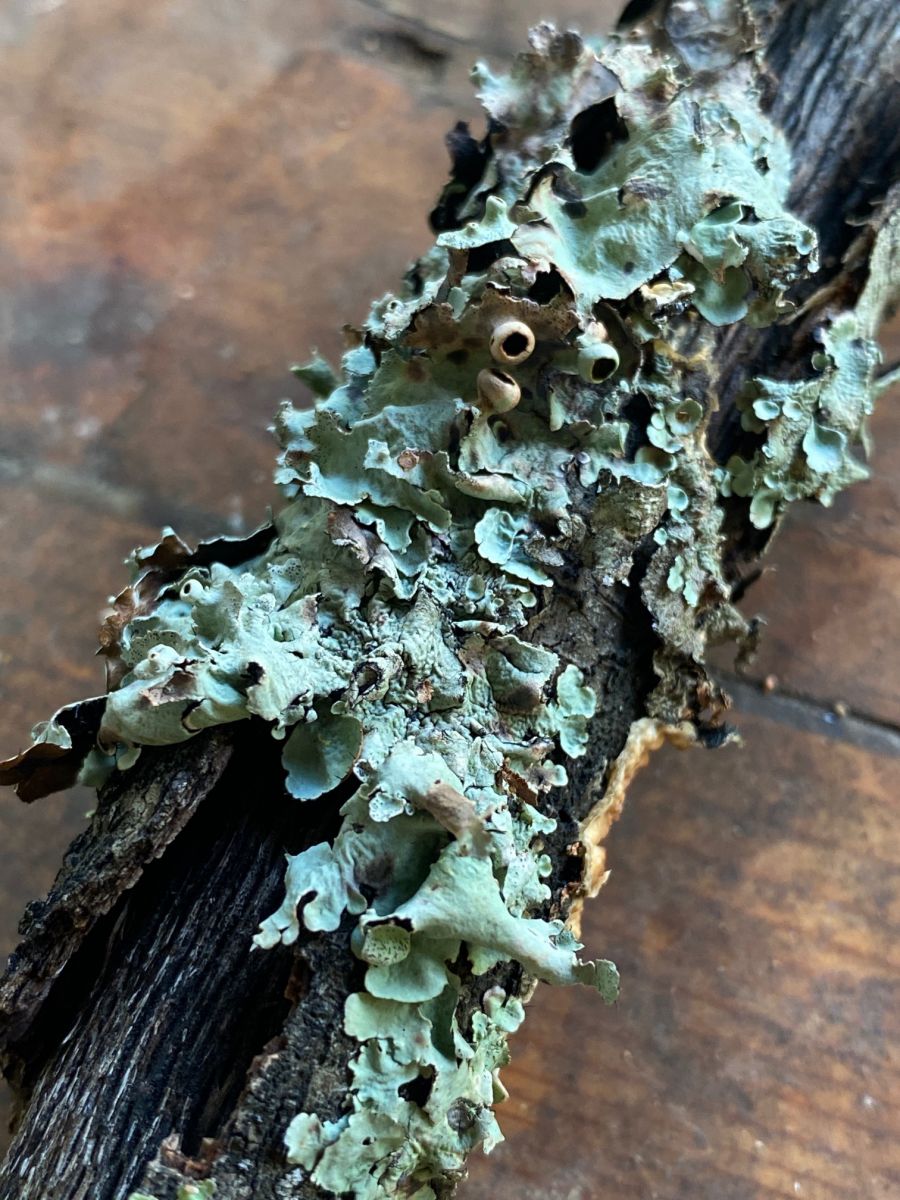
This large Bumblebee is nectaring on Frostweed Flowers, 9 feet tall.
Posted in
Census, Habitat, 2021

Monarch Butterfly nectaring on Frost Weed flower
Posted in
Habitat, 2021

Study of habitat at river bottom land with Turks Cap flowers in bloom.
Posted in
Habitat, 2021

Lichens on dead wood with visible spores
Posted in
Habitat, 2021
